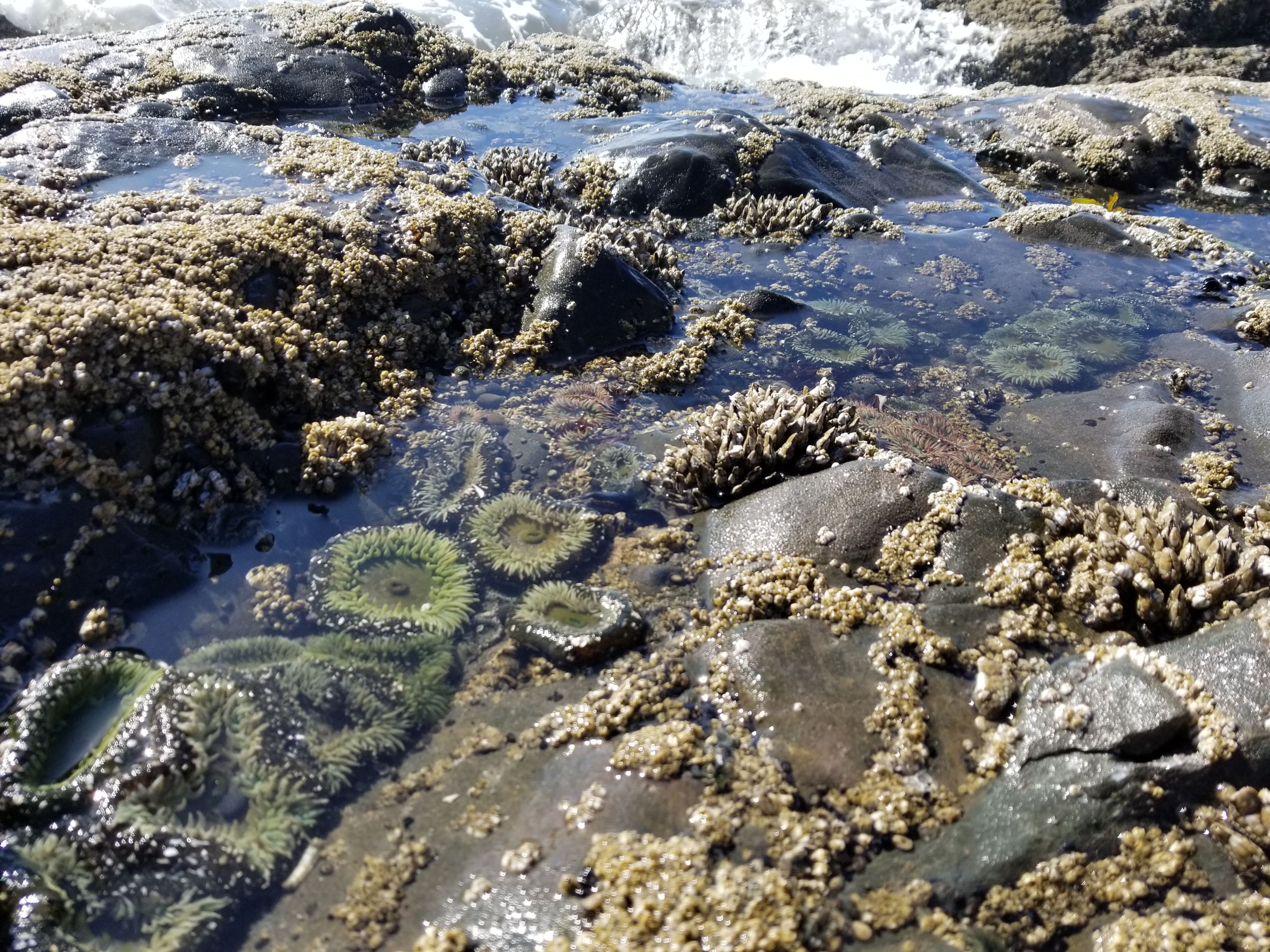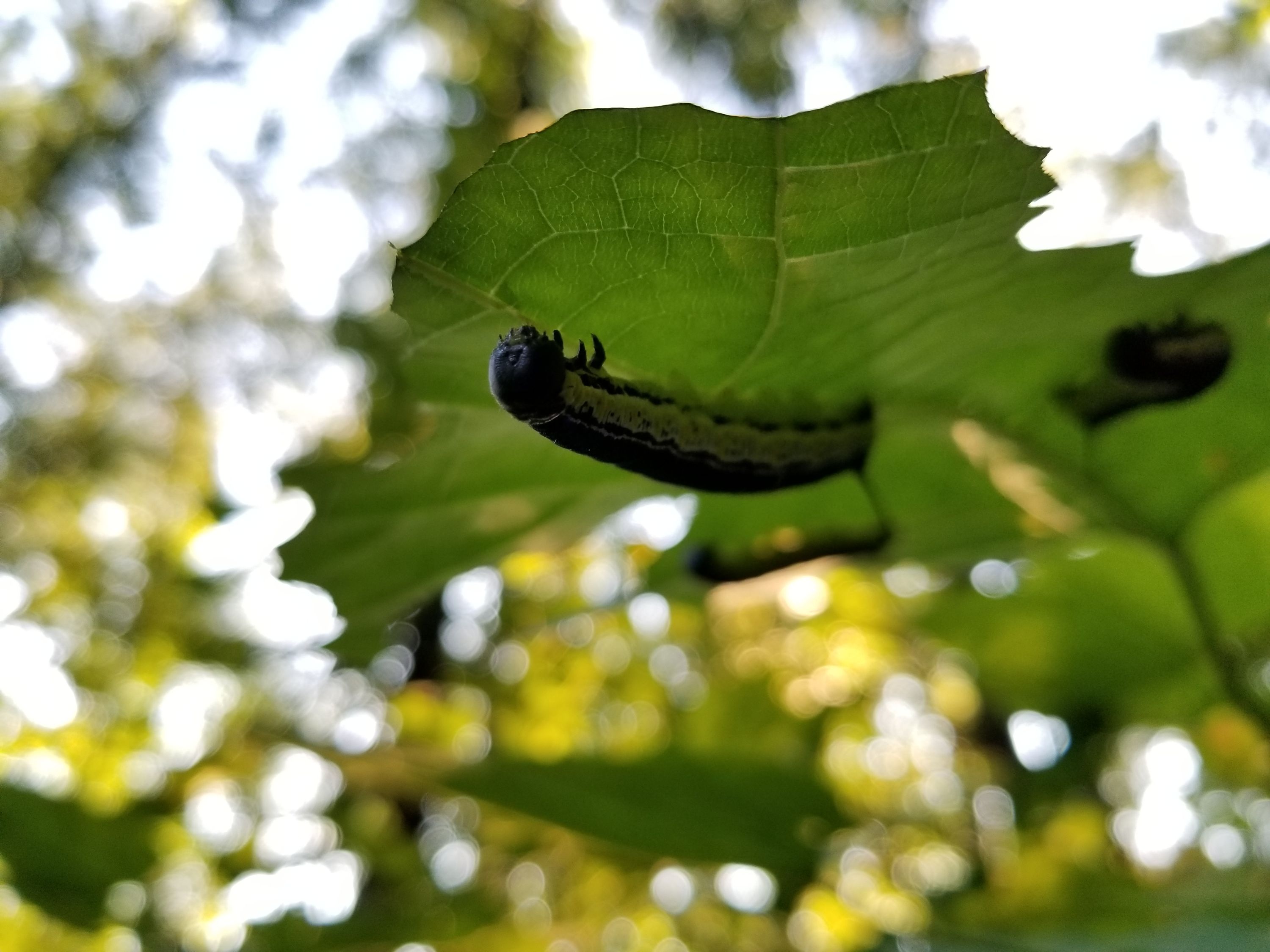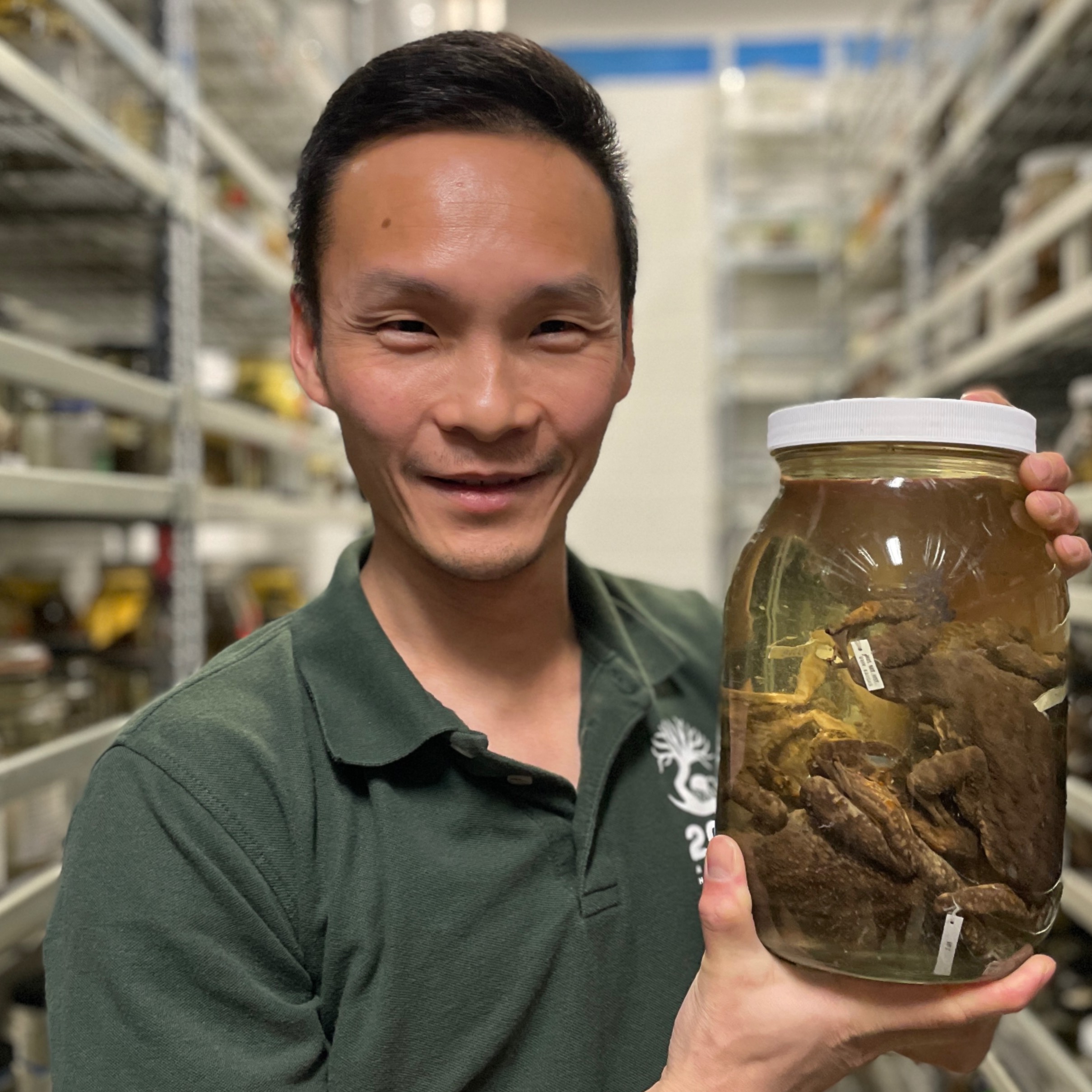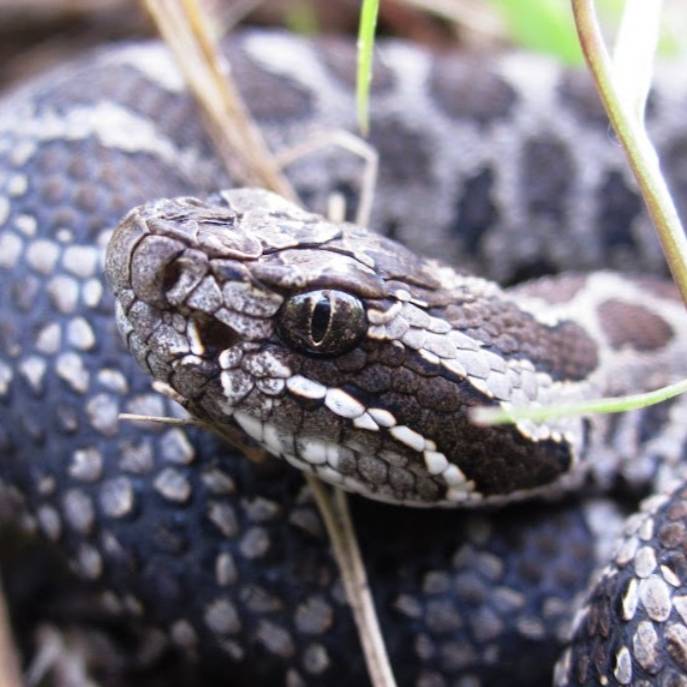On the Power of Observation
By Wissam Jawad, Zoology Major
“All we do is to look after the opinions and learning of others: we ought to make them our own. We closely resemble a man who, needing a fire, goes next door to get a light, finds a great big blaze there and stays to warm himself, forgetting to take a brand back home.” Montaigne
Observation, the act of investigating by means of our senses - the eyes and ears, nose and mouth, skin beneath of which a network of nerves translates touch - is our naturally endowed way of experiencing and understanding the world. It wasn’t until recently, finding myself interacting with more people and spheres of thinking than before, especially in academia, that I learned this form of natural understanding is not trusted by many in the investigation and interpretation of natural phenomena. It is as though, as I have come to view it, we are excluding ourselves from the world in an attempt to better understand it. What could watching the habits of a slug inch across the forest floor, occasionally stopping to munch on a mushroom, tell us that has not already been described in a book or paper? What good is it, after spotting an octopus in a tide pool, to lift the rock and let it curl its tentacles around our hands, tightening the skin with its suckers, watching each arm move with what seems like its own instruction? This is an important thing to know, as much so as the observation itself.
So this is not the writing of someone who is attempting to write truths about nature. Our linear words are not up for the task anyhow. I write this to remind myself, to those I’ve conversed with, and to you to trust yourself, your unique, wonderful thinking and sensing, and to go into nature with open eyes and open palms, ready to understand our world in every way possible. This writing is of self, the investigation of a young biologists’ mind and his way of understanding nature. Of place, field stations, where we can live and work amidst colorful, noisy, crawling nature, the sort of influence that refines our thinking. And of relationships, those minute interactions that hold our natural human world together.
The Refinement of Biological Thought
Under the cover of nightfall, the boat was untied and drifted into the calm canal. Four dark figures stood along the sides of the deck, while one stood behind the wheel. One by one, the white and yellow glows of headlamps illuminated their faces, and reaching above my head, I illuminated my own. We looked forward into the dark open water ahead, and once cleared of the canal, the engine roared and the boat ripped across the waves. Splashes of seawater struck us as we gripped the metal railing. The fiberglass hull bounced above the waves, the distant lights from the island and 80 kilometers behind, the city of Miami, glowed over the dark horizon.
The boat slowed. One of us grabbed the spotlight and began moving it about the surface of the water until a shimmering buoy came into sight. A hand snagged my shoulder and turned me, “We want you to pull this one up.” Before I could nod, she jumped beside me and we bent our bodies over the side railing. I grabbed the barbed pole, snagged the line, and brought it in. Meters of rope fell from our hands and onto the deck as another wrapped it around. As though a car was hanging on the bottom of the line, a sudden jerk pulled it down and tore my palm.
In the black water below, illuminated by the yellow glow of the spotlight, a hooked juvenile tiger shark twisted and snapped its cartilaginous body around, the tip of the hook shining from the bottom of the gapping mouth. Our eyes were fixed on the torpedo-like silver body covered in black, irregular spots. We watched the muscles contracting and expanding beneath the skin as the body pulled the rope around. I bent down and held the body ahead of the dorsal fin, feeling for the flex before the rapid turn of the mouth. My gaze was fixed downward. A voice from behind asked, “Is she relaxed?”, “Yes”. Two hands holding a meter tape came down over the shark, while another hand came down with a pair of scissors, snipping a sliver of skin from the dorsal fin. One pair of hands went up, and the question again, “Are the muscles relaxed?”, “Yes, she feels just fine.” A final set came down with a small tag and barbed needle, and inserted it on the side of the fin. The muscles tightened and the hands cleared before the head turned sharply toward us. I relaxed my grip and lifted my hand, and with one swift snap of the tail, the shark disappeared into the dark water below.
Reaching for the metal railing, eyes still fixed on the water below, the sound of the engine reentered the ears. The engine roared once again, and the boat began to bounce above the wave crests, heading back to the island. With nothing for the eyes to see in the darkness, the mind took flight. From the books and papers, we knew in detail the anatomy and physiology of the relaxing-contracting nature of the shark’s muscles. In the water, with eyes and hands fixed on the body, a different form of understanding became necessary. We knew from our hands holding the dense yet flexible muscle, the contractions starting from behind the gills to the tail, that the shark will roll. This observation told us a truth about the shark as the muscle diagrams in the books did. And if we placed more value on one form of knowledge over the other, the apparent scientific rigor of the dissected muscles over the feeling of the movements, for the sake of what we may have thought to be more objective, we ran the risk of having a distorted image of the tiger shark.
Reading Steinbeck and Ricketts’ Log from the Sea of Cortez months after this experience, I learned that this all-inclusive form of understanding grew in the minds of active observers, as they wrote in the introduction, “These (spines and fins) can easily be counted. But if the sierra strikes hard on the line so that our hands are burned, if the fish sounds and nearly escapes and finally comes in over the rail, his colors pulsing and his tail beating the air, a whole new relational externality has come into being - an entity which is more than the sum of the fish plus the fisherman… There is no reason why either approach should be inaccurate.” The data collected from the tagging and measurements, the dissecting of muscles, and the twisting body and gapping mouth and bleeding palm reveal a more truthful animal than any approach alone. These different forms of understanding constructed a tiger shark that now occupies a more realistic, appropriately sized space in the mind than before.
Reflecting now on many months spent at field stations, I’ve come to find that this sort of refinement of biological thought, this vetting of natural phenomena and our way of understanding them, was the inevitable result of living and working alongside these phenomena. It is said that field stations are ‘living laboratories’, in that there is hardly any room between those doing the studying, the instruments, and that which is being studied. In this sense, field stations create a lifestyle that binds its visitors to the surrounding environment. We’ve often found, at a more rustic site, that our alarm clocks were replaced with the rising sun heating our tents. At another, it was the singing of birds before dawn, penetrating the wooden walls, that woke us for a morning of song recordings. Work at field stations, the observing and sensing of an ecosystem, is often under the influence not of traffic delays or the pettiness of academia, but of the many crawling, swaying parts that make up the world we wish to understand. This inevitable influence of the ecosystem we live and work in stretches even further, into deepening our understanding of ecological processes. And it is only a matter of time before the visitor, now aware of the true immensity of the single organism, stretches themselves further into understanding its relationship to others.
Spatial Awareness and the Immensity of the Invertebrate
Staying at another field station, many of us wanted to survey a local reef to see if we could place cameras to survey the
diversity of fish and invertebrates that inhabited it. Against the heat of the dark
intertidal rockwork, we dawned our snorkel gear and swam from the shore. We paddled
below the small, rolling waves until we found ourselves floating above the reef. Our
gaze was shifted downward. Whatever fatigue we felt from the swim was quickly displaced
by the exuberance of the electrifying world below. Floating above the reef, we watched
as the colors flashed and darted in and out of rocks covered with a dazzling array
of sponges, coral, sea fans and algae. And reflecting on a childhood-inspired method
of searching for backyard insects between rocks and plants, I planned to focus my
attention on specific spots of the reef to look for the small organisms attached to
the rockwork, the ones that would usually go unobserved amidst such vibrant activity.
of us wanted to survey a local reef to see if we could place cameras to survey the
diversity of fish and invertebrates that inhabited it. Against the heat of the dark
intertidal rockwork, we dawned our snorkel gear and swam from the shore. We paddled
below the small, rolling waves until we found ourselves floating above the reef. Our
gaze was shifted downward. Whatever fatigue we felt from the swim was quickly displaced
by the exuberance of the electrifying world below. Floating above the reef, we watched
as the colors flashed and darted in and out of rocks covered with a dazzling array
of sponges, coral, sea fans and algae. And reflecting on a childhood-inspired method
of searching for backyard insects between rocks and plants, I planned to focus my
attention on specific spots of the reef to look for the small organisms attached to
the rockwork, the ones that would usually go unobserved amidst such vibrant activity.
Before diving down to investigate the rock surfaces, stripes of flashing colors came flaring centimeters away. One, then dozens came into view as my scanning field shifted from the reef below to the surrounding water column. I moved my head about and learned that the water was filled with predacious ctenophores, the comb jellyfish. With rows of cilia, microscopic hair-like structures that propel tiny organisms through fluids, they are one of the largest single organisms to be propelled by this form of balletic locomotion. My eyes focused once more, and the jerking, discontinuous movements of the minute, innumerable copepods pulsed into view alongside the clear masses. Fixing gaze on a single ctenophore, I watched as it propelled itself through the swarms of copepods and other planktonic forms. Dozens of invertebrates and eggs floated motionless within the mass, along with the lining of the transparent tubing of the pharynx.
We found that much of the water column was predominated by this swarming and predating of plankton. Like the shark’s muscles, we understood the considerable impact of these interactions in the form of numbers and diagrams, but not in space and time. These small, jerking copepods were no longer constrained to the minute bodies found in images and specimen jars. The ctenophores, with their dozens of consumed plankton, grew vertically and horizontally, stretching kilometers through the water by means of this interacting. The existence of a ctenophore is suddenly seen to be relational, not defined only by its genes or morphology, but also its relationships to others. In this regard, portraits of ecosystems, capturing a colorful variety of organisms relating successfully to one another, can tell us far more about the organisms and the ecosystem than images of any individual member. The dividing of parts, the classifying and therefore isolating of organisms, is to make investigation simpler for the observer, not to be mistaken as the way life truly functions.
And it follows that if we want to understand the ecosystem, we need to give a proportional amount of study to what is most commonly interacting, which was not always most visible and to not divide what is naturally joined. After this sense of scale is recognized from this observing of nature, the fired pursuit to measure these innumerable and foundational relationships becomes inextinguishable.
The Measuring of the Relation: The Study of Ecology
The investigation of self and space in ecosystems is not limited to observations made in unfamiliar environments. The stories above are exciting and demonstrate dramatic moments of growth in biological thought. But the process of reformulating our understanding of the natural world is not the result of isolated, disconnected moments. Rather, it is in the daily observance and deep contemplation required to connect each observation to the next. It is the innumerable hours spent observing individual organisms, their collective interactions, all within a variety of ecosystems, that results in truthful breakthroughs. This daily necessity to observe is what gives field stations their fundamental importance to the aspiring, established, and non-scientist observer. Faced with the new-found complexity of recognizing the not-so-small, fundamental relationships, the task of deciding which ones should be pursued is not a personal decision, but an external one. What have we observed to be a common characteristic of this environment?
‘Look anywhere and you’ll see plants with signs of herbivory. But it’s so rare to see it happening, the insect munching away. All we can do is measure the aftermath.’ An observation made by an inspiring colleague demonstrates the simplicity of deeply stirring ecological questions. How can we learn more about a relationship that only one of the participants sticks around for? If we observe long enough, if we measure enough parts of one of the participants, by chance glimpsing brief moments of the interaction, how much of the total picture can we get?
 Kneeling on inches of leaf litter, studded with clusters tree saplings, we laid down
measuring tape across the forest floor, down the middle of selected plant populations
and asked, ‘What can we measure from this point to that?’. The use of the transect,
the simple laying of a premeasured line, guided us through the complexities of the
interaction. We looked closely at the plants. The green leaves of some were riddled
with holes, veins leaking, edges itched away by the jaws of herbivorous insects. Others,
often centimeters from the herbivorized plants, remained untouched. It was this observing
that guided the measuring, the lengths of our transects based on the attributes of
the population we were studying.
Kneeling on inches of leaf litter, studded with clusters tree saplings, we laid down
measuring tape across the forest floor, down the middle of selected plant populations
and asked, ‘What can we measure from this point to that?’. The use of the transect,
the simple laying of a premeasured line, guided us through the complexities of the
interaction. We looked closely at the plants. The green leaves of some were riddled
with holes, veins leaking, edges itched away by the jaws of herbivorous insects. Others,
often centimeters from the herbivorized plants, remained untouched. It was this observing
that guided the measuring, the lengths of our transects based on the attributes of
the population we were studying.
The transect punishes the observer for lazy or rushed observations. In the intertidal, where I first laid a line and worked to understand a world that will be flooded in a couple hours, I tried to bypass the required time needed for understanding a species distribution before laying the transect. I looked quickly over the mussels, starfish, barnacles, and said, under pressure, ‘This population looks to have so and so trait, let’s measure it’. And then the transect, by its knee scrapping centimeter to centimeter approach, demonstrated that I was mistaken. Unfocused, distracted eyes placed patches of mussels where there weren’t any. The ‘tons of hiding crabs’, as I noted before a transect, made up a mere handful of individuals after the measuring. Many transects took a similar amount of time, but how much interaction measured in each depended greatly on the quality of the preliminary observation.
This process of observing, measuring, and counting guides the ideas and models that help us understand the system further, predicting interactions that we may not have the chance to observe. The continual refinement of biological thought by means of natural observation prevents the flipping of this relationship. And surrounded by a team of passionate, uniquely skilled people, the process of laying down measuring tape to the formulating of models becomes seamless, following this natural direction of understanding. Some in our plant and insect interaction lab were doing the observing, the counting, the measuring. Another used the data retrieved by the observers to create models of the interaction. And with regular communication between all levels of the group, all can be exposed to the whole process.
The Human Relation
A story, remembered in the safety of one’s mind, is often warped and small. The story shared in the presence of people who were involved, however, stretches and grows to the size of their perspectives, and at the same time is chipped away at, the rough, misremembered edges smoothed away by the honest checking of observant friends. The image grows, now containing the many details and perspectives of multiple sets of eyes and minds. A similar thing happens out in nature, when watching events unfold in surrounding ecosystems. What is seen during a snorkel doubles in size when a pair brave the water together, sharing their fish counts on the walk back along the shore. The insect community of a local milkweed population suddenly expands in the hundreds when an observant friend lifts a leaf that you missed, and the potential misidentification of the many squirming larvae undergoes instant peer review. The seeing is accompanied by the thinking, by minds wonderfully different than our own. Nowhere is this mixing of different perspectives in a natural setting more prevalent than at field stations.
The long days assisting with research in the field, where the stories in this post take place, often ended with dinners and walks with the many visitors staying at the station. *What draws people to field stations transcends our varying backgrounds. Visiting eco-tourists, international researchers, students and business retreaters, the dinner table at any given station is a place to mix thoughts and stories with a world of different people. It is during these dinners and walks that the working out and understanding of the day’s observations, colorful and raw and untainted, can be understood by others who have seen what we haven’t, and thought what we couldn’t. Field stations are simply the infrastructure to give us a place to work and play in the environment, the walls and roof. It is for the visitors to make it something truly special, and to carry what they’ve learned back to their lives away from the station.
“It is the linkage between fleeting but dramatic images and the less glamorous long-term science underlying the images that establishes a strong nexus joining science, society, and policy.” Pauchard and Sagarin, Observation and Ecology.
These ‘fleeting but dramatic images’, the witnessing of natural phenomena, often results in an investigation that forms a personal connection to the image, and thereby societal connection. During a walk through a native Michigan garden at a field station I was staying at, accompanied by visiting friends, none of which were scientists, we took a seat on the grass and watched the garden spark with life. Bees danced and butterflies floated through the colorful flowers, surrounded by the tall grasses and host plants that provided essential habitat and food for a dazzling variety of insects. We watched quietly, and then the conversation would spark and land like the insects. ‘Why are the monarchs landing on those plants?’, and so we talked of host plants. ‘I have some of these plants in my backyard, why do I not see so much life?’ and then, ‘…well, my garden is a small little thing isn’t it, maybe I need more types of plants?’, so we talked about the importance of diversity and density of native plants.
When visiting the friends several weeks later in our hometown, our usual hangout routine was interrupted by a collective urge to go native plant shopping for the one with the little garden. We learned at the store that the purposeful stocking of native plants was a popular trend, people have recognized their subtle beauty and ecological benefits over other, exotic forms. Walking back, we noticed front yards covered with the kinds of plants that excited us at the station, the kinds we carried back to her apartment.
Those who have spent time observing and conversing with others at field stations know very well the impact of such active experiences by the contact we keep with those we’ve met. If someone visits a field station and, after observing a delicate and deeply stirring interaction between organisms and finding a meaningful connection from it, begins to undergo inspiring personal changes and becomes more socially active, environmentally conscious, intellectually unbounded, we are left with little to measure. Yet this may be the most important thing to happen in a person’s life, and it will go undetected if we bind ourselves to our trusted metrics.
What draws people to field stations, to study and be surrounded by nature, is a fundamentally human quality. And though I have written much of this in the context of a student of biology, I am not alone in the realization* that these are places of universal importance to anyone, in science, in academia, and* in neither. Stations can be centers of not only scientific interaction, but of interactions made across fields, social positions, and cultures.
Many lessons can be learned from the staying and interacting at a field station, not the least of which is that the titles we give ourselves, the walls we build to separate and classify us, crumble before a meaningful connection with another.



